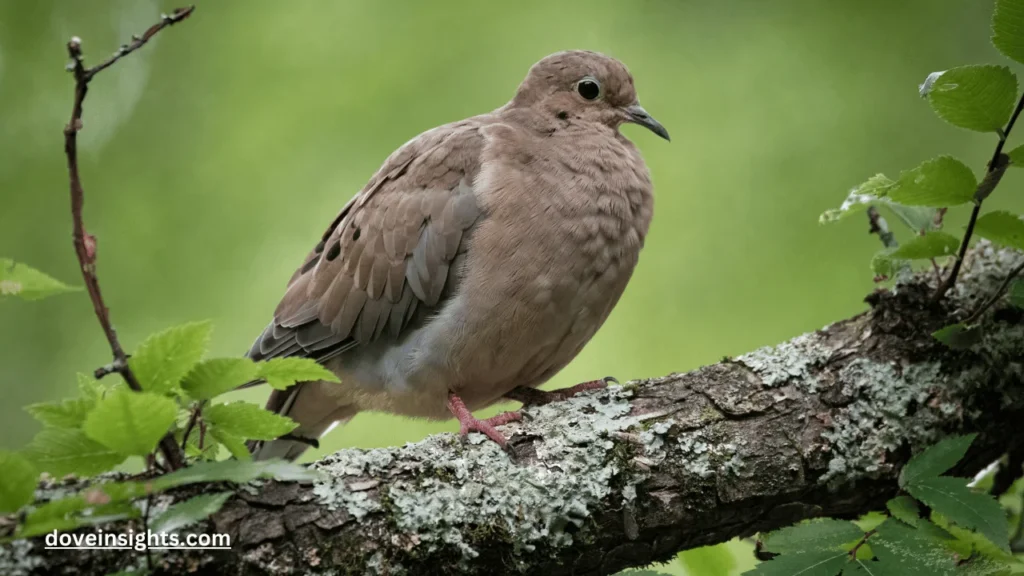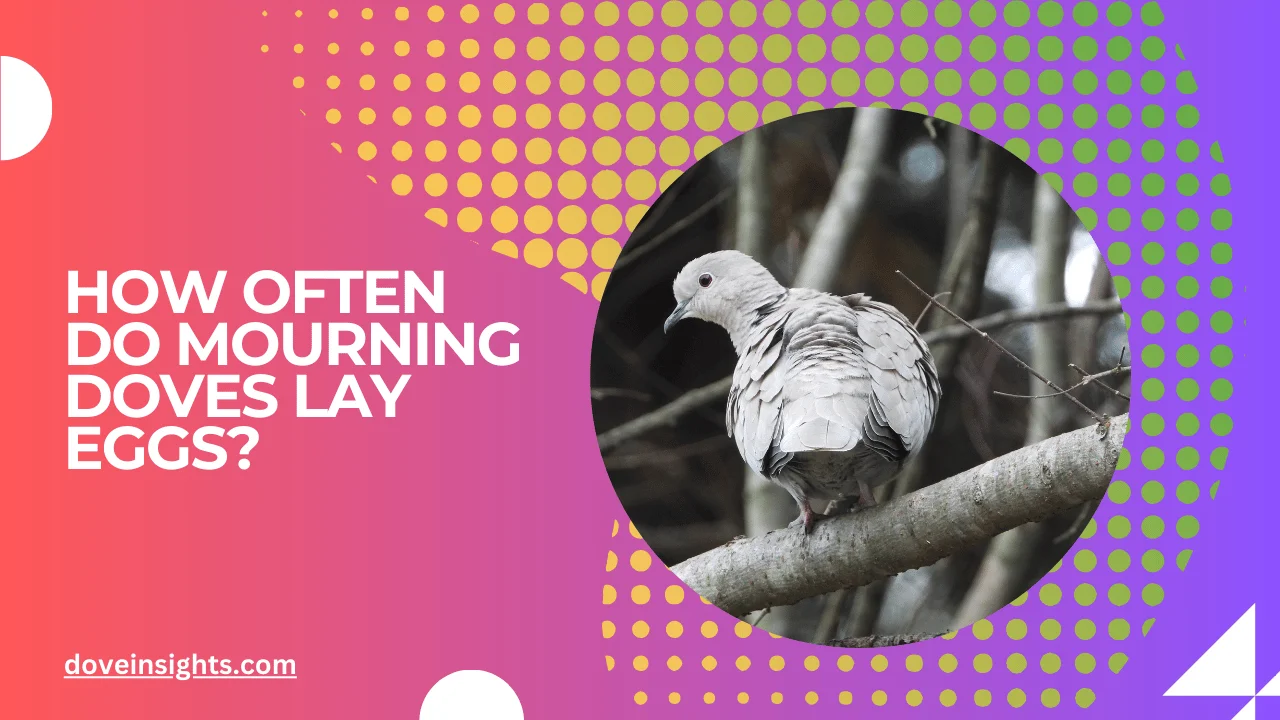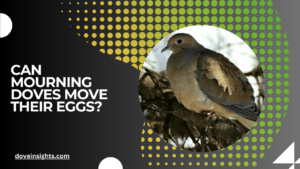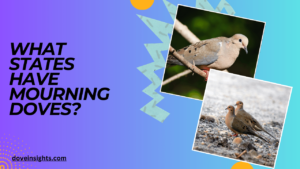Have you ever paused to admire the delicate grace of a mourning dove as it tends to its nest?
These gentle birds, known for their soothing coos and elegant demeanor, have a fascinating reproductive cycle that’s both efficient and unique in the avian world.
Understanding how often mourning doves lay eggs not only deepens our appreciation for these creatures but also sheds light on their survival strategies and adaptability in diverse environments.
Mourning doves are prolific breeders, and their nesting habits are finely tuned to their role in nature’s cycle. They lay eggs multiple times a year, ensuring their population remains robust despite numerous challenges like predators and environmental changes.
This frequency is unusual compared to many bird species, making their breeding behavior a topic of intrigue for bird enthusiasts and researchers alike.
This article explores the frequency and conditions under which mourning doves lay eggs, the factors that influence their reproductive cycles, and the critical role these cycles play in their survival.
Whether you’re a birdwatcher, a nature lover, or someone with a curious mind, this deep dive into the world of mourning dove reproduction will leave you with a greater understanding of these fascinating birds.
Contents
- 1 The Mourning Dove’s Breeding Cycle
- 2 Environmental Factors Influencing Egg Laying
- 3 The Role of Parental Care
- 4 Challenges and Threats During the Breeding Season
- 5 Supporting Mourning Doves in Your Area
- 6 Conclusion
- 7 FAQ’s
- 7.0.1 How many times a year do mourning doves lay eggs?
- 7.0.2 How many eggs do mourning doves lay at a time?
- 7.0.3 What is the incubation period for mourning dove eggs?
- 7.0.4 Can mourning doves lay eggs outside the breeding season?
- 7.0.5 What happens if a mourning dove’s nest is disturbed?
- 7.0.6 Do mourning doves reuse their nests?
The Mourning Dove’s Breeding Cycle
Seasonal Patterns
Mourning doves begin their breeding season as early as March in warmer regions, continuing until late September. This extended period allows them to produce multiple broods.
Frequency of Egg Laying
On average, mourning doves lay eggs 5-6 times per season, producing two eggs per clutch. This frequency is one of the highest among North American birds.
Incubation and Nesting Duration
Once eggs are laid, both parents share the responsibility of incubation, which lasts approximately 14 days. After hatching, the fledglings stay in the nest for another 12-14 days before they are ready to leave.
Environmental Factors Influencing Egg Laying
Weather Conditions
Mourning doves are highly sensitive to weather patterns. Warm temperatures and favorable conditions can extend their breeding season, while extreme weather may reduce the number of broods.
Availability of Resources
The abundance of food sources like seeds and grains significantly impacts their ability to lay eggs frequently. Scarcity may force them to slow down their reproductive cycle.
Urban vs. Rural Habitats
In urban areas, mourning doves often face fewer predators but more disturbances from human activity, which can influence their nesting success and frequency.
The Role of Parental Care
Shared Responsibilities
Both male and female mourning doves take turns incubating the eggs, with males often taking the day shift and females the night. This shared effort ensures constant care and protection for the eggs.
Feeding the Fledglings
After hatching, the parents feed the chicks with crop milk, a nutrient-rich secretion unique to pigeons and doves. This sustenance is vital for the fledglings’ growth and survival.
Preparing for the Next Clutch
Once the fledglings leave the nest, mourning doves quickly prepare for their next clutch, showcasing their remarkable reproductive efficiency.
Challenges and Threats During the Breeding Season
Predators
Common predators like crows, snakes, and cats pose significant threats to mourning dove eggs and chicks. Their nests, often hastily constructed, can make them vulnerable.
Human Disturbance
Construction, landscaping, and other human activities can disrupt mourning dove nesting sites, leading to abandoned eggs or nests.
Natural Disasters
Sudden storms or heatwaves can destroy nests or force the birds to relocate, cutting their breeding season short.
Supporting Mourning Doves in Your Area

Providing Safe Nesting Spots
You can support mourning doves by installing platform feeders or nesting boxes in quiet, sheltered locations.
Ensuring a Steady Food Supply
Offering seeds, especially millet and sunflower seeds, can attract mourning doves to your yard and help sustain their energy during the breeding season.
Reducing Risks
Keep domestic cats indoors and avoid disturbing known nesting areas. Simple actions can significantly improve their chances of successful reproduction.
Conclusion
Mourning doves are truly remarkable in their ability to lay eggs multiple times in a single season, a testament to their adaptability and survival instincts.
From their meticulous shared parenting duties to their resilience in the face of environmental challenges, these birds play a crucial role in maintaining the ecological balance.
In this article, we explored the frequency of mourning dove egg-laying, the factors that influence their breeding cycle, and the ways we can support their nesting efforts.
By understanding their habits and needs, we can foster a greater connection with these gentle creatures and ensure their continued presence in our ecosystems.
The next time you spot a mourning dove cooing softly or tending to its nest, take a moment to appreciate the intricate balance of nature at work. With a little effort, we can create environments where these birds—and countless others—can thrive.
FAQ’s
How many times a year do mourning doves lay eggs?
Mourning doves lay eggs approximately 5-6 times per year, depending on environmental conditions.
How many eggs do mourning doves lay at a time?
They typically lay two eggs per clutch.
What is the incubation period for mourning dove eggs?
The incubation period lasts about 14 days, shared between both parents.
Can mourning doves lay eggs outside the breeding season?
In rare cases, doves in warmer climates may lay eggs outside the typical March-September breeding season.
What happens if a mourning dove’s nest is disturbed?
If disturbed, mourning doves may abandon their nest and eggs, highlighting the importance of minimizing human interference.
Do mourning doves reuse their nests?
Yes, mourning doves often reuse nests from previous seasons, adding new material as needed.








